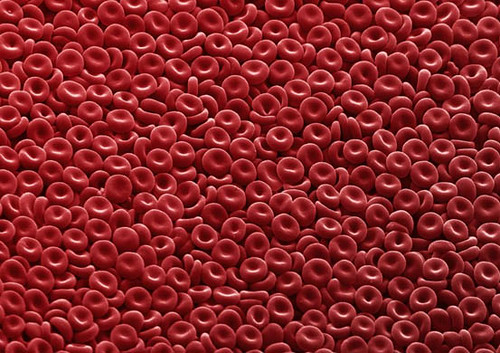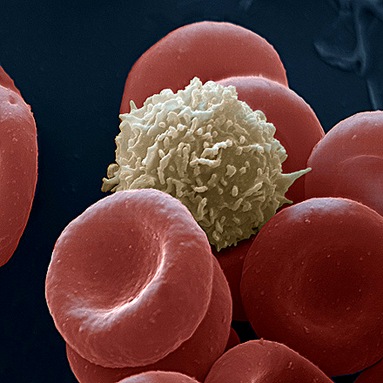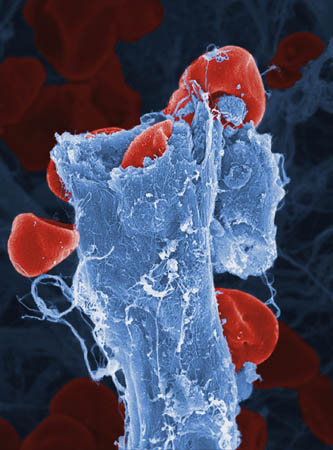A carpet of red blood cells clearly showing their typical biconcave disc shape. This highly flexible shape provides a large surface area for absorption and release of oxygen and carbon dioxide, and allows the cells to move easily through the finest of capillaries. (Colour-enhanced scanning electron micrograph by Dave McCarthy and Annie Cavanagh)
These pictures show different kinds of blood cells: Red blood cells, (erythrocytes, red), white blood cells (leukocytes, yellow, greenish), and platelets (thrombocytes, grey). The disc-shaped, biconcave erythrocytes transport oxygen to the body's cells and remove carbon dioxide to the lungs. Leukocytes are part of the immune system, defending the body against infection by ingesting pathogens by phagocytosis or by producing antibodies. Thrombocytes are involved with blood clotting. They gather at sites of injury and produce clotting factor.



.jpg)




 2:07 AM
2:07 AM
 automotive
automotive




 Posted in
Posted in



















0 comments:
Post a Comment